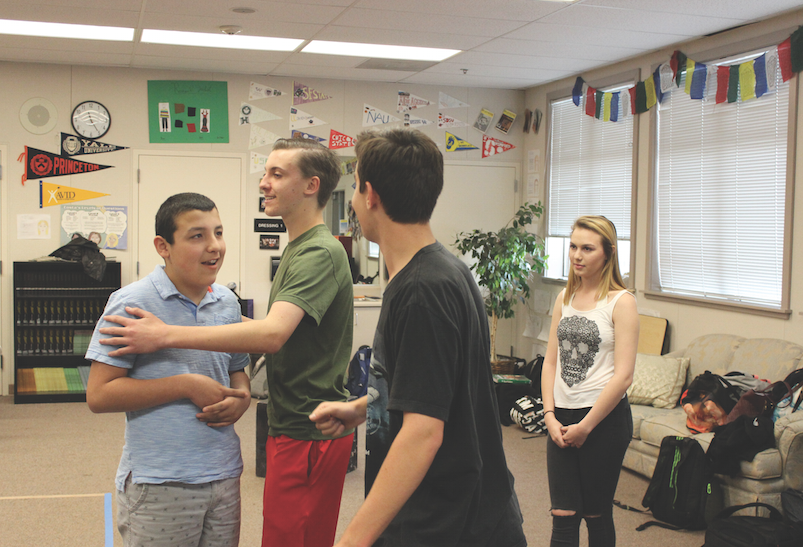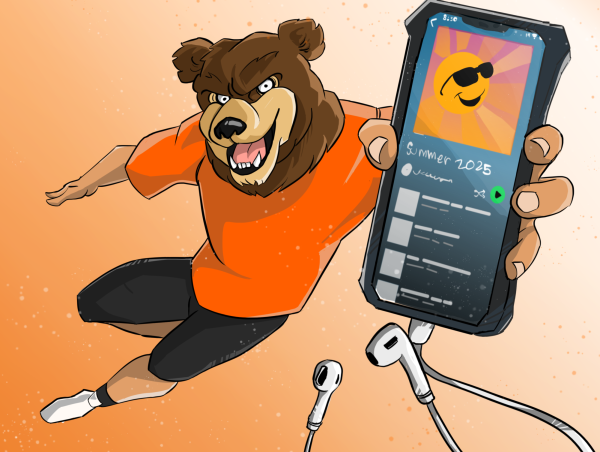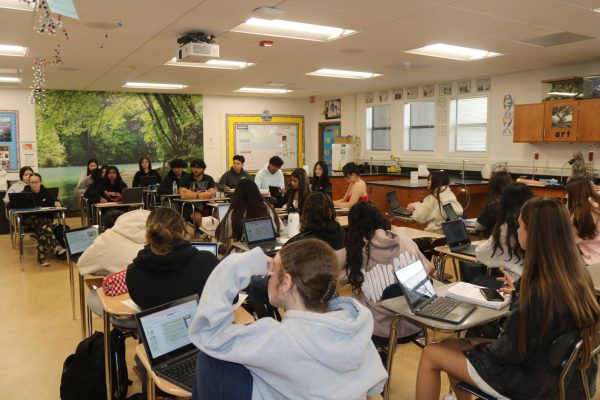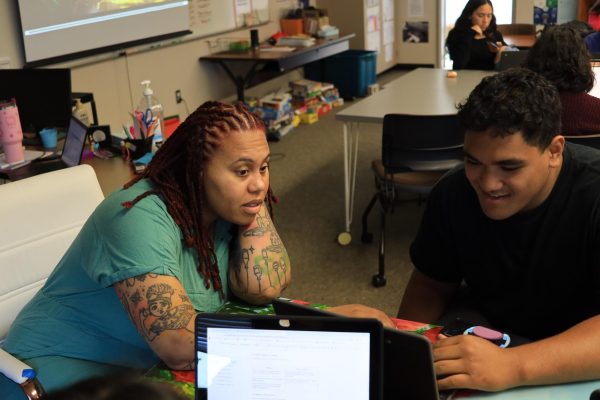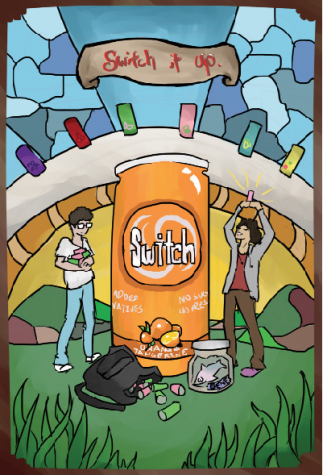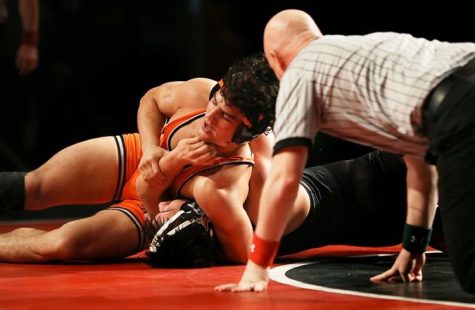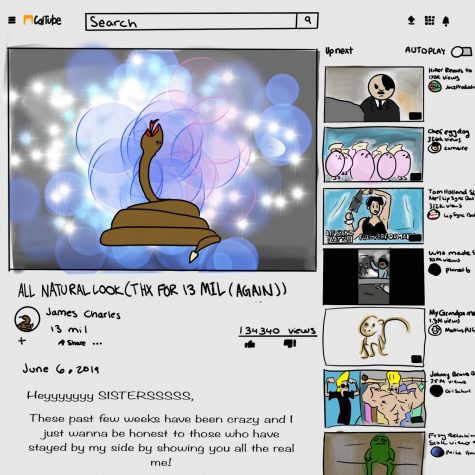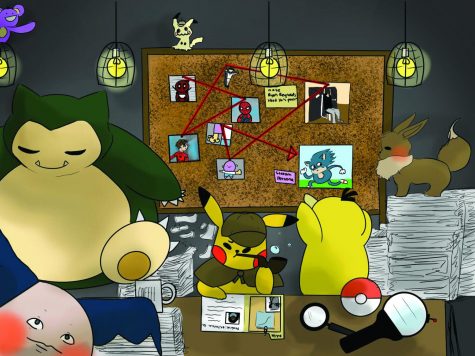Experiencing a day with special ed students
Cal High has more than 2,500 students and enrollment numbers are projected to grow in the coming years. At The Californian we try to highlight the talents and skills of our entire student body.
Unfortunately, groups of students can sometimes be forgotten. One of Cal’s least recognized programs is Special Education.
Inside these classrooms a re a group of hardworking teachers, aides, and TAs who work to support students who may need a little more help than the average student, but nonetheless deserve to be included and supported by the rest of the student body. This is their story.
I did not quite know what to expect the first time I went to observe a special education class, but I was warmly welcomed by teacher Christine Niemoeller, her staff, and her students.
One of the first things that stuck out to me was the way students were taught.
Every single student in the class has a different set of goals and needs a different teaching strategy to achieve it.
The students’ goals vary depending on what is best for them as determined by each student’s Individual Education Plan (IEP).
As well as academic subjects such as reading, writing, and math, students work on living and more conventional skills.
“The goal is to make them as independent as possible,” Niemoeller says.
Students work on tasks such as pulling out their IDs, identifying different types of money, and stating their home address in the particular student’s chosen method of communication.
The way students achieve these goals also varies as each student has a different way of learning.
Some students learn in a more conventional way using books and learning websites, while others need a more hands-on approach to learning.
The teachers use various methods to help students who require a little more support.
One method is errorless learning, where the correct answer is hinted at until the student succeeds.
The classroom itself is different from any other average classroom, too.
It has a kitchen, a plethora of iPads and computers, as well as its own bathroom. The technology in particular is very helpful.
For some students, technology is their primary form of communication, and for others it is an invaluable education tool.
Apart from spending time in the special education room, students often attend classes with the rest of the student body. This is called mainstreaming.
“We have and have had kids in cooking, drama, digital photo, ceramics, PE, and yoga,” said Niemoeller.
Students interact and participate in their electives just like any other student, although they may need a little extra assistance from their aides and TAs.
Senior Julia Oliveri takes ceramics, and with the help of her aides, creates beautiful works of art. She also uses Pinterest to search for new project ideas.
About halfway through my first period with the special education class, I was introduced to Noah Renaud, who had just returned from Drama Class.
Noah is one of the students who participate in mainstream classes. He was a little shy at first but nonetheless very welcoming of me to his classroom. He playfully dodged my questions with an, “I don’t know, Patrick.”
After spending about 15 minutes messing with me, Noah invited me to his desk to count his money.
As the class curriculum also heavily focuses on life skills, the students receive money they can spend in the class store that opens every Friday.
Noah had $60 and let me help him carry it.
After asking about the types of activities he likes to participate in at school for the umpteenth time, Noah finally gave me a straight answer.
“I like talking to you,” Noah said. And I had made a friend.
I also spoke to senior James Granieri. Like Noah, he attends drama fourth period and was very welcoming to me.
“I love my friends and drama class, I love Miss Woods,” he said when asked about his favorite parts of the day.
As one of the oldest students in his class, he deeply cares about his classmates. It is sometimes hard to tell that he is a student and not a TA.
I went with James and Noah to go pick up lunch for the rest of the class in the cafeteria.
While Noah helped put his classmates’ lunches in a bag with one of the room’s aides, James and I sat down and talked.
He told me about his love for Cal High sports and that he has “about 1,000 friends.” Then during a lull in the conversation, he jumped up and just started picking up the trash left on the tables and ground from brunch.
He picks it up without being asked and without hesitation because that is the type of person he is.
The next even day I had the pleasure of going to drama with James and Noah. It was a very eye opening experience to see how these students interact in the mainstream population.
From what I observed, the majority of the class seemed reluctant or to shy to interact with Noah and James. Except freshman Jordan Ruiz who sat next to James.
They had a long conversation discussing their favorite Disney characters and movies. But unfortunately Noah and I sat alone for the majority of the class.
But they do participate normally in the class.
At the beginning of class they do warm ups just like everyone else and played the role of “Moonshine” in a class project consisting performing scenes from “A Midsummer’s Nights Dream.”
Teacher Laura Woods very much appreciates what Noah and James add to the class.
“I’m glad they are here,” she said.
Back in Niemoeller’s classroom it becomes apparent that these students are truly not that different from you and me.
James jokes with a classmate and Noah is hanging out with his friends in the back of the room. It is another day at Cal just like everybody else.
